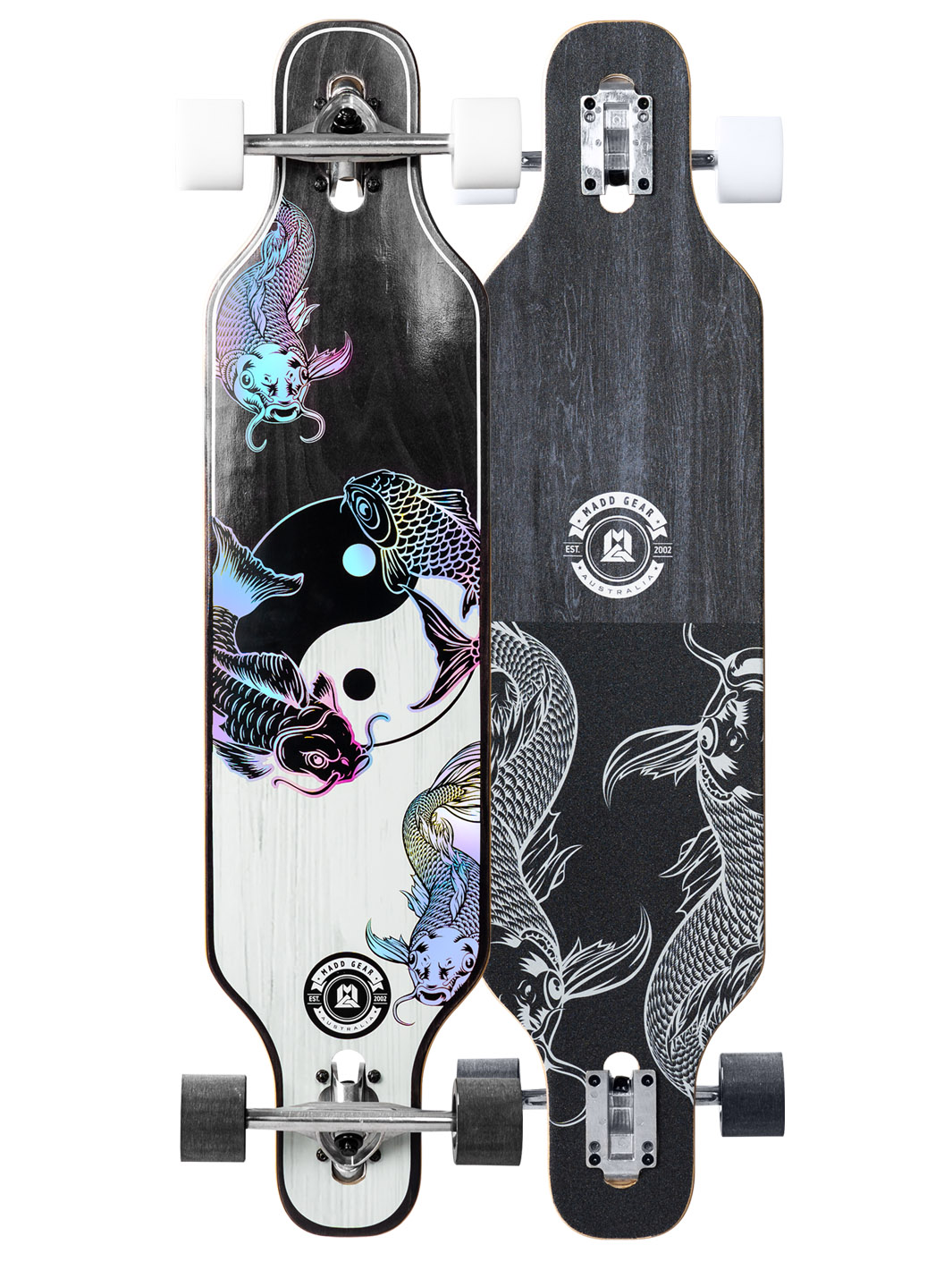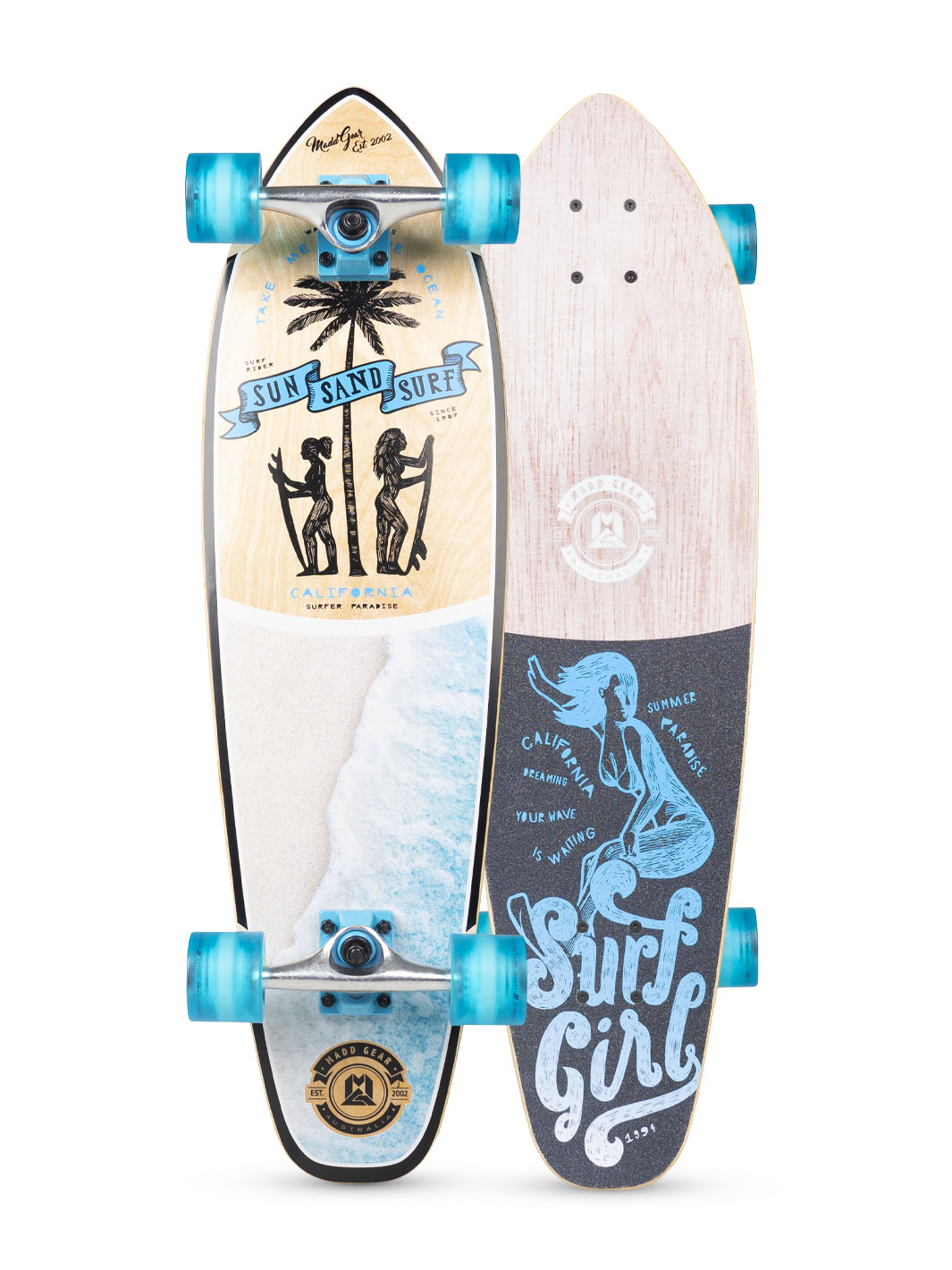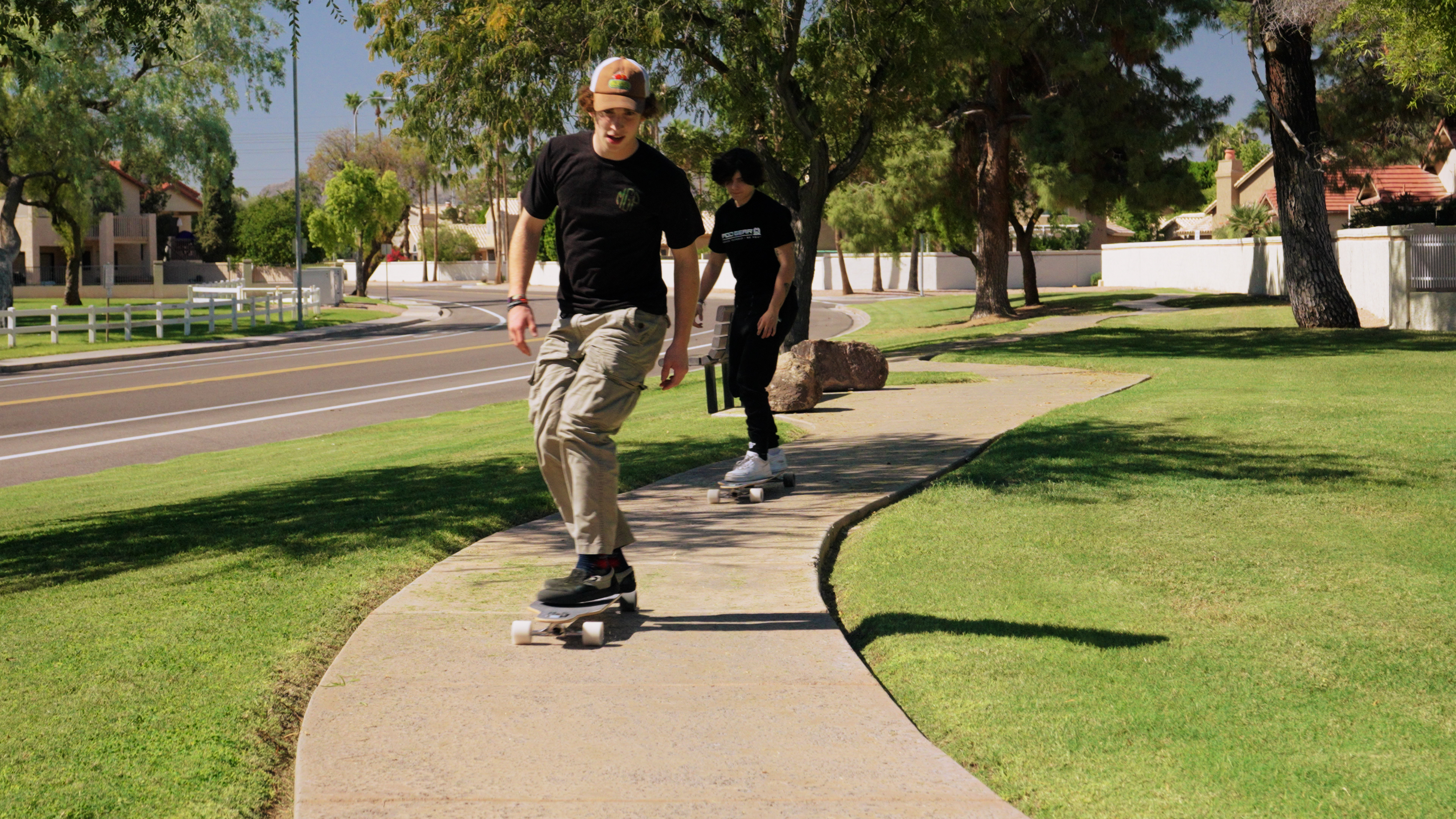Longboard vs Cruiser Skateboard: Key Differences Explained
Choosing between a longboard cruiser vs cruiser skateboard can be a challenge, especially if you're new to the skating world. Both boards are designed for smooth rides, but their performance, design, and ideal use cases differ significantly.
Understanding these differences will help you decide whether a cruiser longboard or traditional skateboard best matches your riding style, comfort level, and long-term goals-not just the look.
Decoding the Differences: Longboards vs Cruiser Skateboards
When comparing a longboard cruiser vs cruiser skateboard, the real difference comes down to purpose, performance, and riding environment.
A longboard cruiser typically features a longer and wider deck—ranging from 36 to 42 inches—paired with broader trucks that enhance stability at higher speeds. This design makes longboards a top choice for riders who enjoy long-distance cruising, downhill runs, or smooth carving sessions. Their extended wheelbase provides better balance, while the flexible deck absorbs vibrations for a more comfortable ride.
On the other hand, a cruiser skateboard is all about portability and quick maneuverability. Usually under 34 inches in length, cruisers have a compact, lightweight build and come equipped with soft, grippy wheels that handle rough city pavement with ease. They're perfect for urban commuting, weaving through crowds, and quick rides to nearby destinations.
There's also the cruiser longboard hybrid-a design that blends the comfort and stability of a longboard with the nimble, responsive feel of a cruiser. This option is great for riders who want the best of both worlds.
Featured Boards

Madd Gear Balance Longboard
38" drop-through design for stability and smooth riding experience.
Buy Longboard
Madd Gear Surfer Girl Cruiser
32" compact cruiser with agile handling for urban environments.
Buy CruiserAnalyzing Deck Size: A Key Differentiator
When it comes to the longboard cruiser vs cruiser skateboard debate, deck size is one of the most important factors influencing ride feel, comfort, and control.
A smaller cruiser longboard deck-usually under 34 inches-delivers nimble handling and quick responsiveness, making it ideal for navigating crowded streets, sharp corners, and tight pathways. This compact size is perfect for riders who prioritize portability and need to carry their board between rides.
In contrast, longer longboard cruiser decks, typically between 36 and 42 inches, offer superior stability and make pushing and gliding feel effortless. The extended wheelbase keeps the ride smooth and steady, especially on open roads, downhill runs, and long-distance routes.
Whether you choose a cruiser’s compact deck for urban agility or a longboard cruiser’s elongated platform for speed and comfort, understanding how deck size impacts your riding style will help you pick the perfect setup for your needs.
Shapes Matter: Cruiser vs Longboard Designs
The shape of a skateboard deck-whether it’s a cruiser longboard or a traditional longboard-plays a crucial role in its overall performance and the riding styles it best supports. Cruiser boards aren’t just styled to look like surfboards for aesthetic appeal; their squared tails and pointed noses serve practical purposes that enhance urban riding.
In contrast, longboard cruiser decks come in a wider range of shapes, each designed to meet specific rider preferences and riding conditions. For example, pintail longboards feature longer decks that provide excellent stability during downhill rides or extended cruising sessions, especially at higher speeds.
Differentiating Board Shapes for Riding Styles
Understanding how deck shapes influence ride style helps you pick the right board:
- Cruiser longboards typically have shorter, narrower decks that offer enhanced agility, making them perfect for sharp turns and navigating tight urban corners. Their compact design allows for quick responsiveness and easy portability.
- Pintail longboard cruisers are ideal for long cruising trips and downhill runs because their shape prevents wheel bite and offers superior control even at fast speeds.
- Symmetrical cutout longboards cater to more versatile riders who enjoy freeriding and sliding maneuvers, enabling tricks and spins without sacrificing balance.
For riders torn between stability and agility, hybrid longboard cruiser designs combine the maneuverability of cruisers with the comfort and stability of longboards, offering a versatile riding experience for various terrains.

Trucks Talk: Understanding Mount Types
The truck mount type on your cruiser longboard or skateboard is a crucial factor that directly impacts performance, handling, and overall ride quality. Generally, longboard cruiser skateboards feature top-mount trucks, which are mounted directly under the deck, providing a responsive and agile ride.
Traditional Kingpin (TKP) vs Reverse Kingpin (RKP) Trucks
When diving deeper into skateboard truck types, two primary variants come into play: Traditional Kingpin (TKP) and Reverse Kingpin (RKP) trucks.
- Traditional Kingpin Trucks (TKP) are commonly found on mini-cruisers and smaller cruiser longboards. Their compact size and responsive design deliver superior maneuverability, making them perfect for tight turns and navigating crowded urban environments. TKP trucks enable quick, sharp carving at low to medium speeds, ideal for city commuting and agile riding.
- Reverse Kingpin Trucks (RKP) are predominantly used on longboard cruisers due to their enhanced stability and smooth turning capabilities. The RKP design excels at maintaining control during high-speed downhill rides and long-distance cruising. These trucks offer a fluid carving experience that helps riders maintain balance on varied terrains, making them a favorite among downhill racers and longboard enthusiasts.
Beyond Just Mounts: Choosing What Fits Your Style
Selecting the right truck mount type is only part of the equation. Other critical considerations include deck width, weight, and design features like kicktails. The choice between a cruiser longboard or standard longboard-and the trucks they come with-depends heavily on your personal riding style and needs.
For example, cruisers are generally lighter and more compact, perfect for urban riders who prioritize portability and sharp responsiveness. Longboard cruisers, meanwhile, cater to riders who seek stability, smoothness, and control over longer distances.
At Madd Gear, our skateboards are engineered with ideal specifications and truck configurations to meet the diverse needs of skaters—whether you're carving city streets or cruising downhill.
Differences Extend Beyond Deck Size
Another important distinction between cruiser longboards and traditional longboards lies in their wheels. Longboard cruiser wheels typically start around 70mm in diameter and can be even larger. They are made from a harder compound that offers less grip but enables higher speeds and better durability during long rides.
In contrast, cruiser longboard wheels are softer, providing a smoother ride over rough city pavement and absorbing shocks effectively. While cruiser wheels excel in urban environments, they may wear out faster compared to longboard wheels.
A Matter of Preference and Purpose
Choosing between a longboard cruiser and a standard cruiser skateboard ultimately comes down to your riding style and intended use:
- Opt for a cruiser longboard if you want quick, nimble rides around town with easy portability.
- Choose a longboard cruiser for smooth, stable cruising on open roads or downhill routes where balance and speed control are essential.
When making your decision, consider these unique board features carefully to ensure maximum performance and safety. Remember, selecting the wrong board can negatively affect both.
Whether you're navigating busy city streets or cruising down wide-open roads, the right choice of cruiser longboard vs longboard cruiser wheels and trucks will optimize your ride experience.

Keep in mind that choosing the wrong board can affect not only performance but also safety.
Skateboard vs Cruiser vs Longboard
Choosing between a skateboard, longboard cruiser, or cruiser longboard comes down to riding style, terrain, and personal preference.
- Skateboards: Small, lightweight decks with hard wheels—perfect for tricks, technical flips, ramps, and skatepark performance. They excel in tight spaces but aren’t as smooth on rough roads.
- Cruisers: Mid-sized boards with soft wheels and a portable design-ideal for short commutes, city cruising, and weaving through streets with ease. Great for beginners who want comfort without sacrificing maneuverability.
- Longboards: Large, stable decks with smooth, grippy wheels—built for long-distance rides, downhill racing, freeriding, and high-speed carving. They provide unmatched stability and a flowing ride feel.
When comparing skateboard vs longboard cruiser vs cruiser longboard, think about your main goal-tricks and agility, urban portability, or smooth, stable cruising. The right choice will transform your riding experience.
Frequently Asked Questions
What is a cruiser skateboard used for?
A cruiser skateboard excels in city living—built for nimble, easy transportation and quick rides.
Is a cruiser easier than a longboard?
Yes—cruisers offer superior portability and maneuverability but aren't as stable at top speeds compared to longboards.
Should I use a longboard vs cruiser for college?
Choose a cruiser for tight campus paths and easy storage. Opt for a longboard if your route is longer or covers varied terrain.
What is a cruiser longboard?
It's a hybrid board that offers the stability of a longboard with the agility and compactness of a cruiser—a superb compromise.

Conclusion
Choosing between a longboard cruiser vs cruiser skateboard ultimately comes down to your riding goals, environment, and comfort preferences.
- Cruiser Skateboard: Perfect for riders who value portability, lightweight design, and quick, agile handling. Ideal for weaving through city streets, short daily commutes, and spontaneous rides with friends. The soft wheels provide a smooth roll even on rough pavement, while the compact deck makes storage and carrying effortless.
- Longboard: Best for those who want smooth, stable cruising with maximum comfort over longer distances. Whether you're gliding down scenic paths, cruising along the beach, or tackling downhill rides with confidence, the larger deck and wheels deliver stability, balance, and speed control.
Understanding what a cruiser skateboard is, the benefits of a cruiser longboard, and the core differences between skateboard vs longboard cruiser vs cruiser skateboard ensures that your choice aligns perfectly with your lifestyle. Riders seeking maneuverability and convenience will love a cruiser, while those chasing speed, flow, and stability will naturally gravitate toward a longboard cruiser.
In the end, both options offer unique thrills-whether you're carving tight turns downtown or enjoying long, flowing rides on open roads. Choose the board that inspires you to ride more often, explore new places, and make every journey as exciting as the destination.
Find Your Perfect Ride Today
Whether you choose a cruiser for urban agility or a longboard for smooth, stable cruising, the right board will transform your riding experience.
Shop Longboards Shop Cruisers






Dejar un comentario